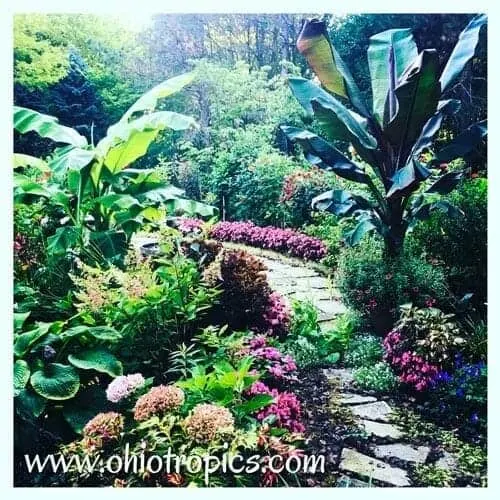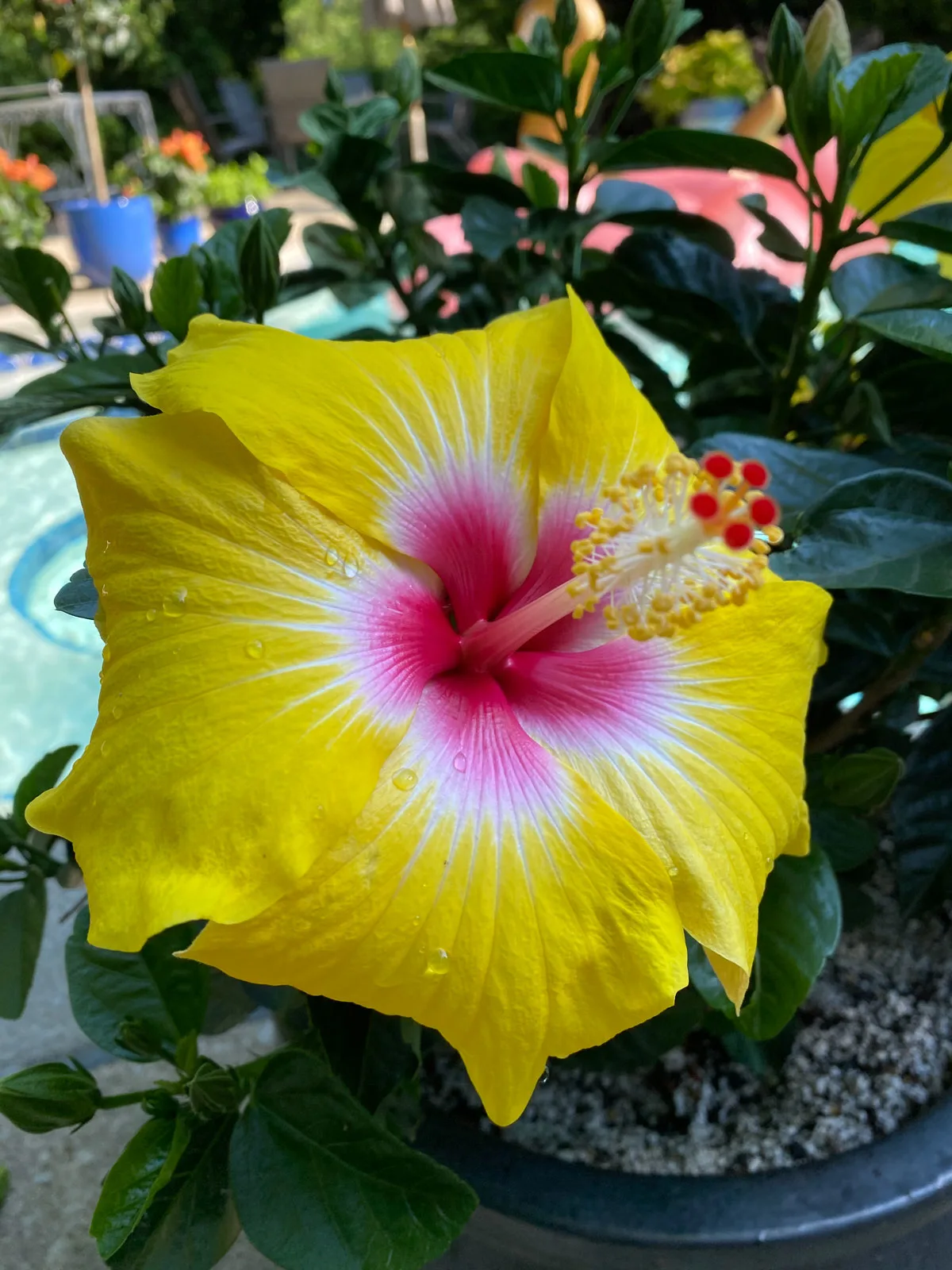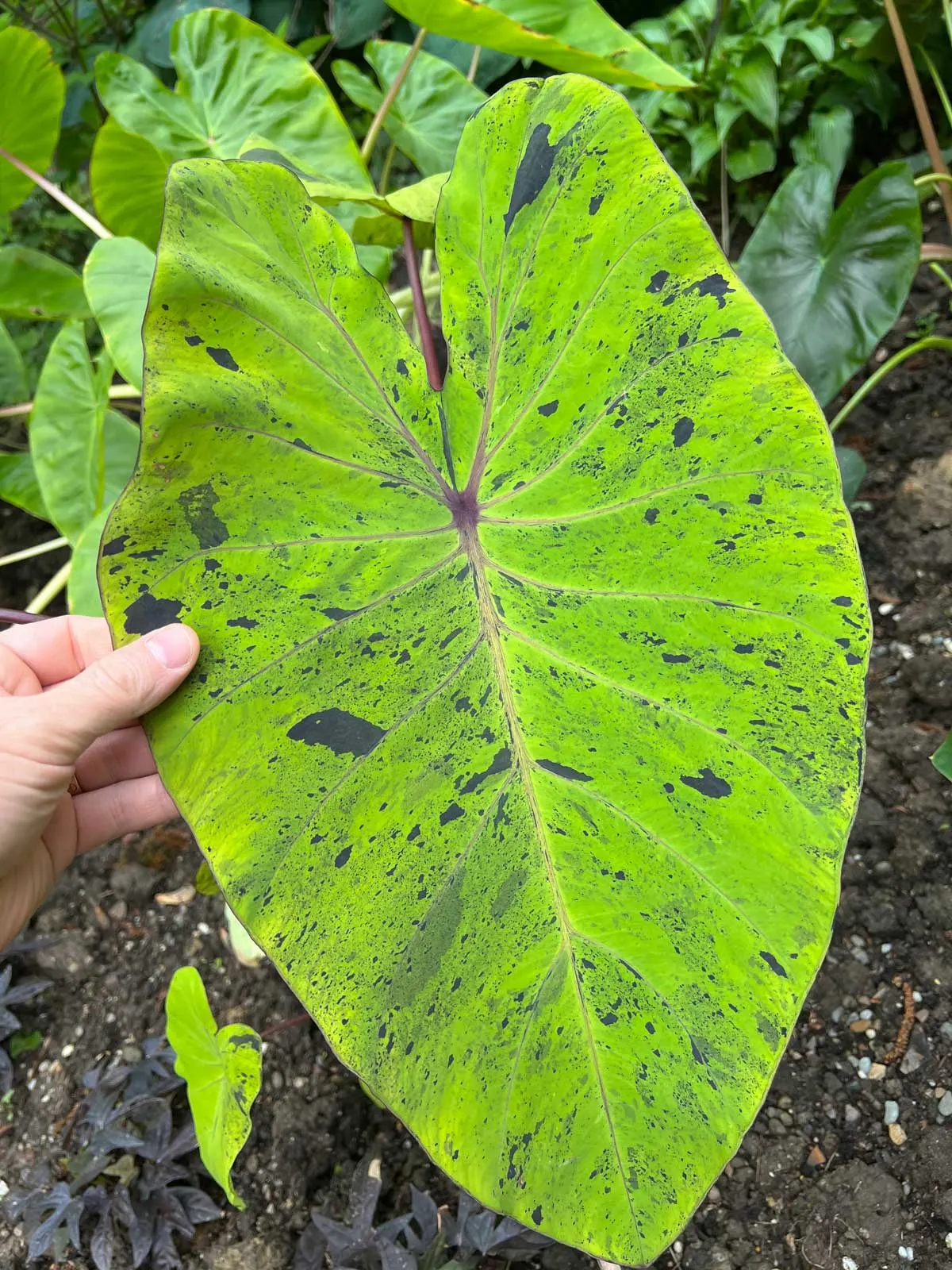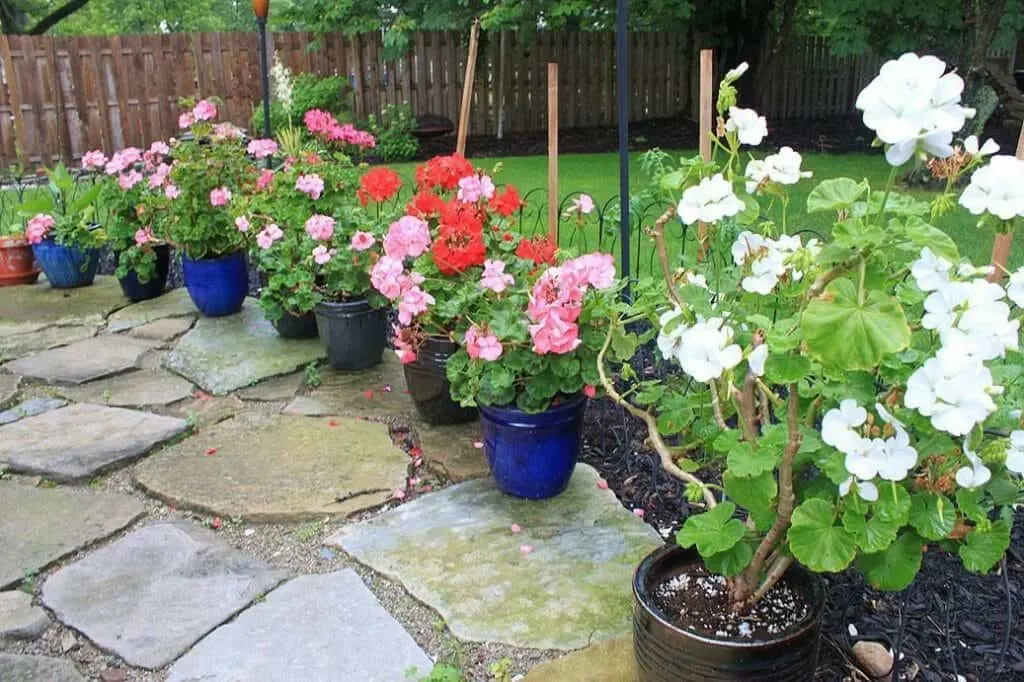Some of the links in this post may be affiliate links.
Overwintering banana plants is one of the easiest things ever. If you’re anything like me, you would hate to just watch that huge banana plant freeze and die after a long summer of luxurious growth. In this post, I will show you exactly how to overwinter your Red Abyssinian Banana plant.
If you’ve never done it before, you will be shocked at how simple it is. Keep reading to learn exactly how.
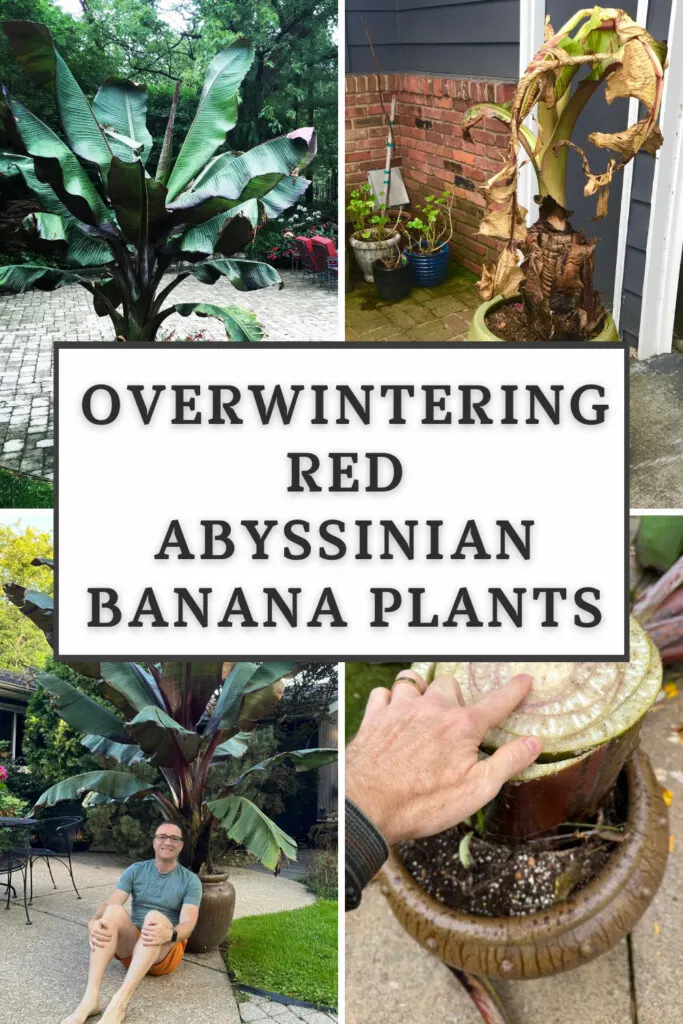
By overwintering, I mean preparing your plant to sit dormant when cold weather arrives in Fall and Winter. As much as I would love to keep the plant growing, I don’t have the room in the house, nor in my greenhouse, so I prepare it for dormancy.
Fortunately, it is simpler than you think! All you need is a saw and a cool, dark area to store your pot during cold weather.
Table of Contents
OVERWINTERING BANANA PLANTS
In this post, I demonstrate with the Red Abyssinian Banana (Ensete vetricosum ‘Maurelii’), but the process will also work for any plant in the banana family, Musaceae.
I’ve been overwintering these plants for many years. Here is my plant in the summer of 2023, with me sitting underneath the plant for scale.
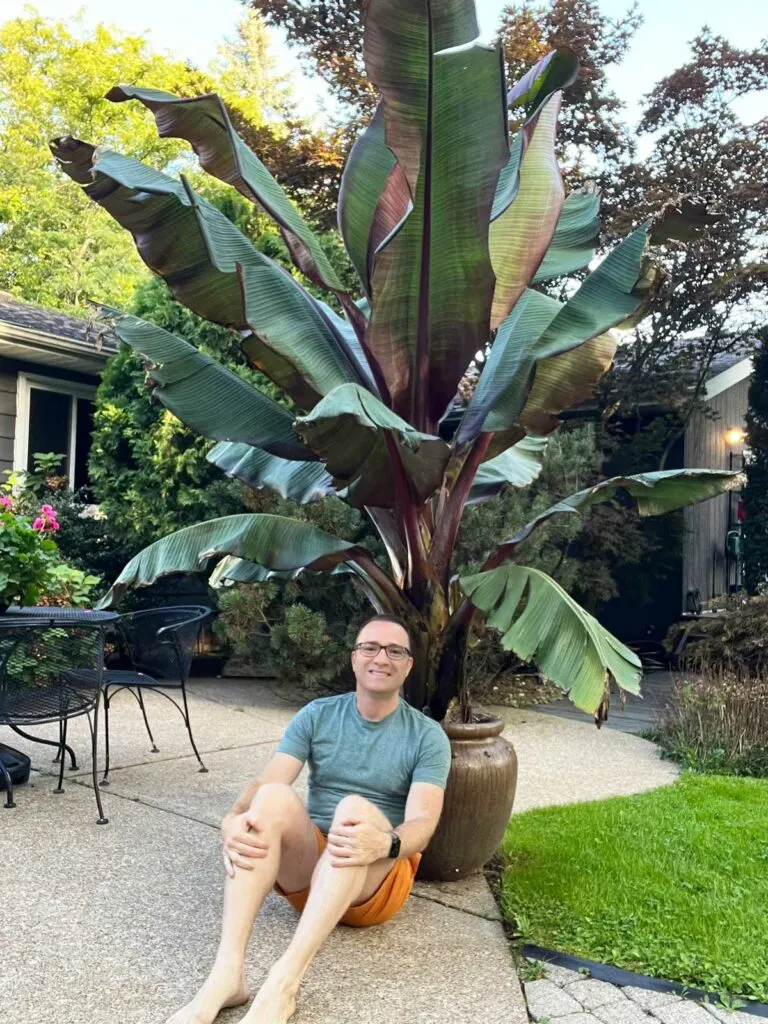
I try and wait as long as I can before placing the plant in storage. I don’t go strictly by the calendar, but rather, I wait until temperatures dip down consistently to about 40°F or so.
The plants can take it a bit colder, but I try and do it before freezing temperatures happen since our weather can be very volatile and change on a whim.
Here are the steps I take to overwinter the plant.
1. TAKE A SAW TO IT
Once temperatures get to the 40s Fahrenheit (for me it usually means around October or November), I will take a saw and cut the trunk down and leave about a foot or so at the base of the plant.
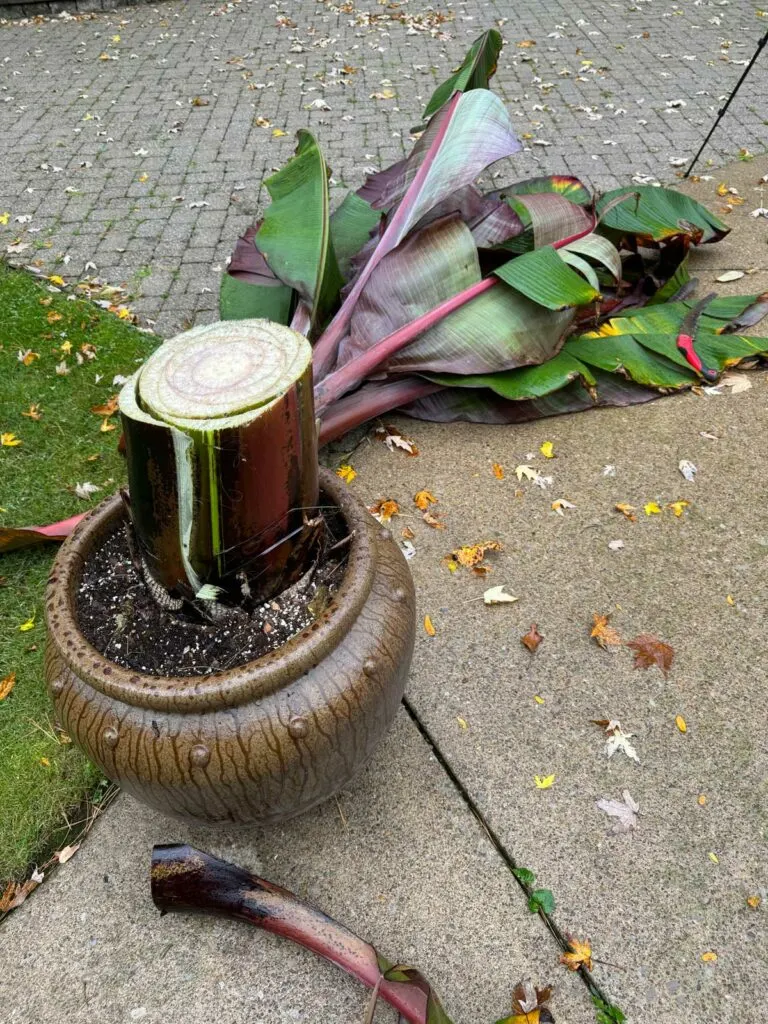
2. PLACE IN STORAGE FOR THE WINTER
Next, you’ll want to place your pot in a cool, dark area until the Spring time when the weather warms up. If you can, choose a location that is about 40-55°F (4-13°C). A cool, dark basement is great, or a garage that stays above freezing works well too.
As long as you plan on keeping it dormant, which is what I’m describing in this post, a location that is completely dark is perfect. You want to provide as little light as possible.
I’ve stored my banana plants as warm as 60°F, but cooler is better because it will slow down the growth. Surprisingly, after you saw off the plant, your plant will want to push out growth very quickly after warmer temperatures.
Take a look at the same plant below, just days after starting to store it. We had a warm snap and so it started to grow even in the dark.
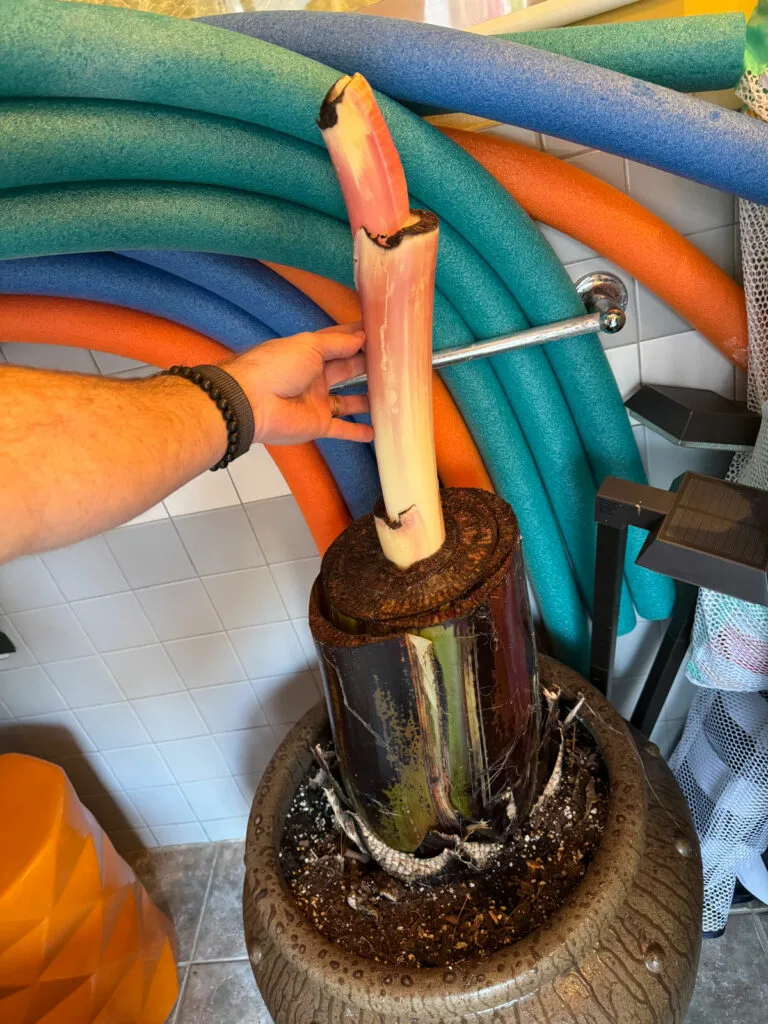
If this happens, just leave it until the Spring. I will soon show you what to do soon.
And while the banana plant is in storage, I leave it that way during the entire storage period with no water at all until Spring. This may seem extreme, but it will survive just fine, especially if it was a larger plant to begin with.
3. TAKE IT OUT OF DORMANCY IN THE SPRING
Now let me show you a different plant from previous years so I can continue to show the process. Here is a plant that stayed in a heated garage the entire winter and in the photo below, I just set it outside in the Spring when the weather warmed up. You can see all the new growth that it pushed out, and it’s not pretty!
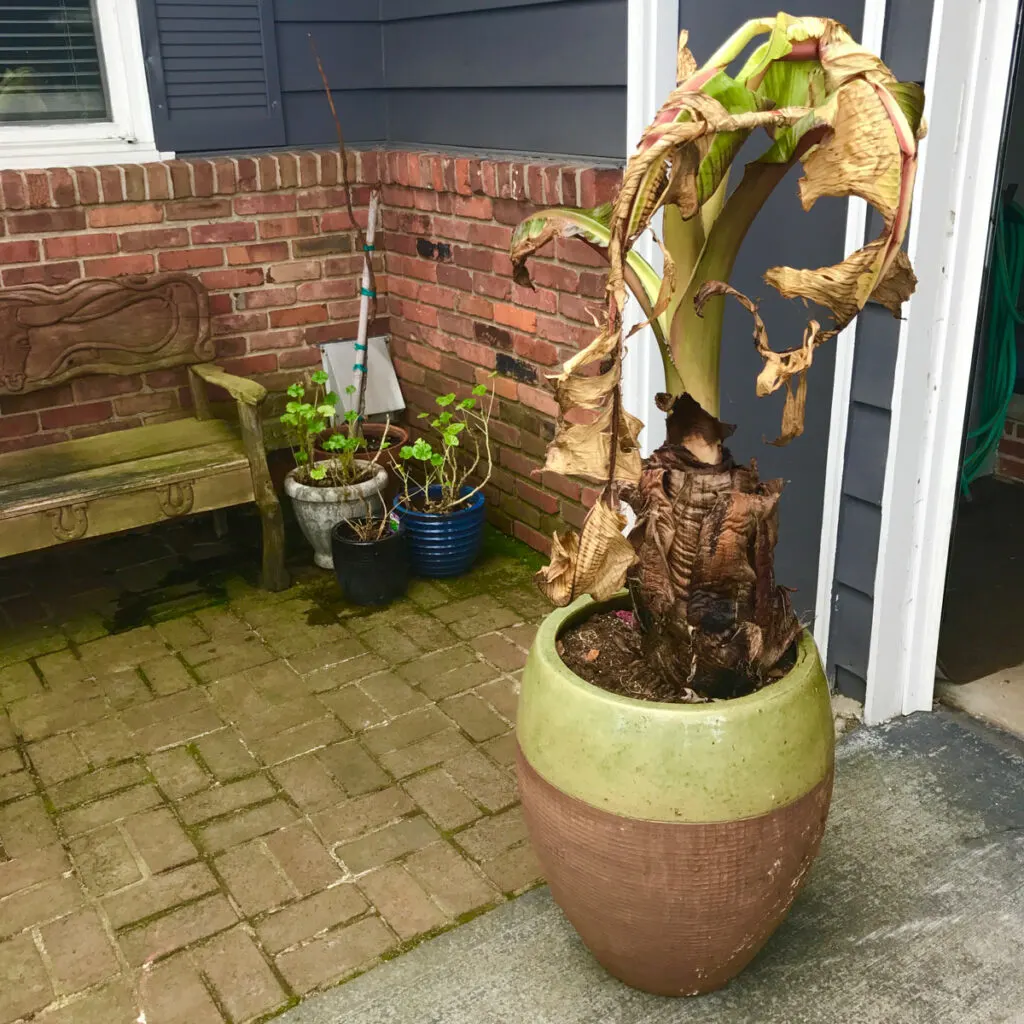
Since the foliage is damaged and unsightly, at this point, I simply cut the plant off again, resulting in the following. Don’t worry. It will grow back!
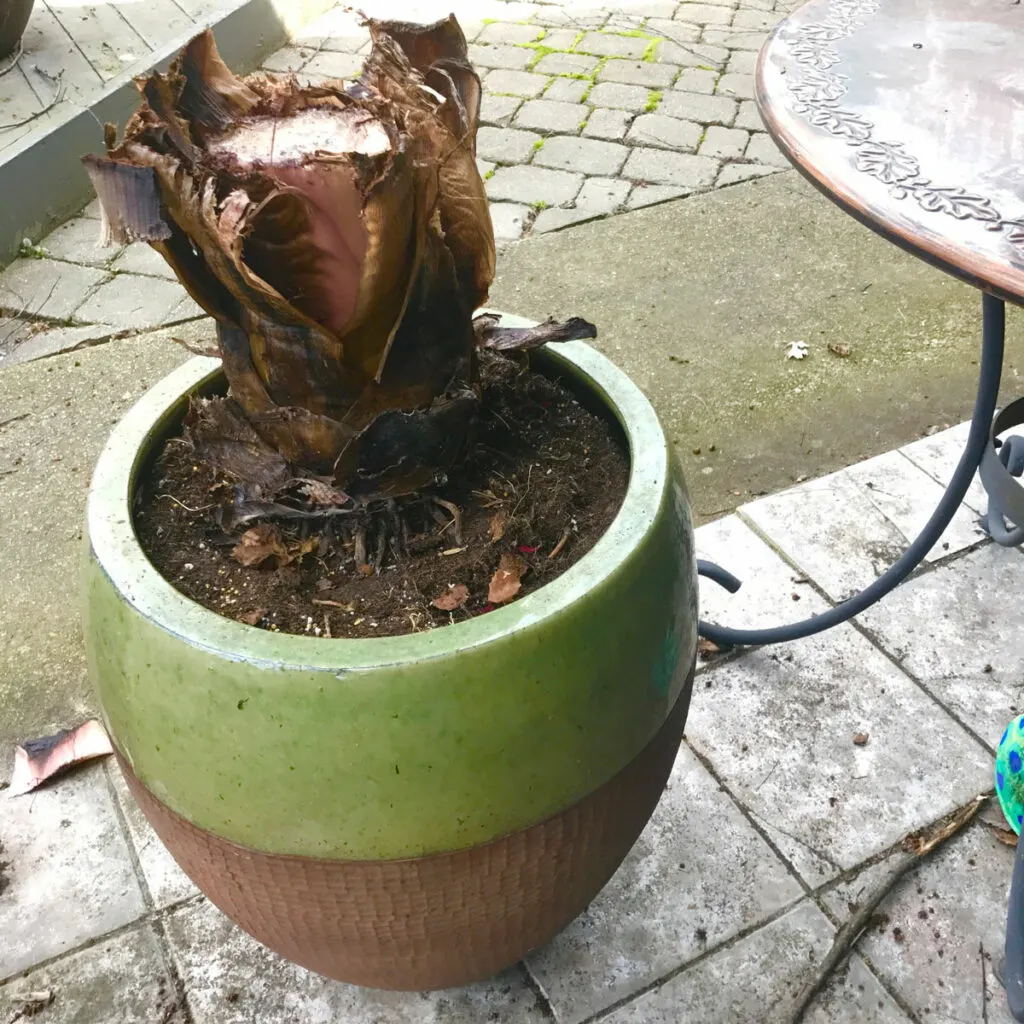
At this point, you can repot into a larger pot, or top dress your plant with fresh soil. I transplanted this into another pot, added some Osmocote time-release fertilizer and started watering again.
I then placed it in a shady area outdoors for a few days. After that, I moved it to a spot with a little sun, and gradually increased the sun exposure until it was acclimated to a full sun spot.
Two months later, by June, this is what the same plant looked like.
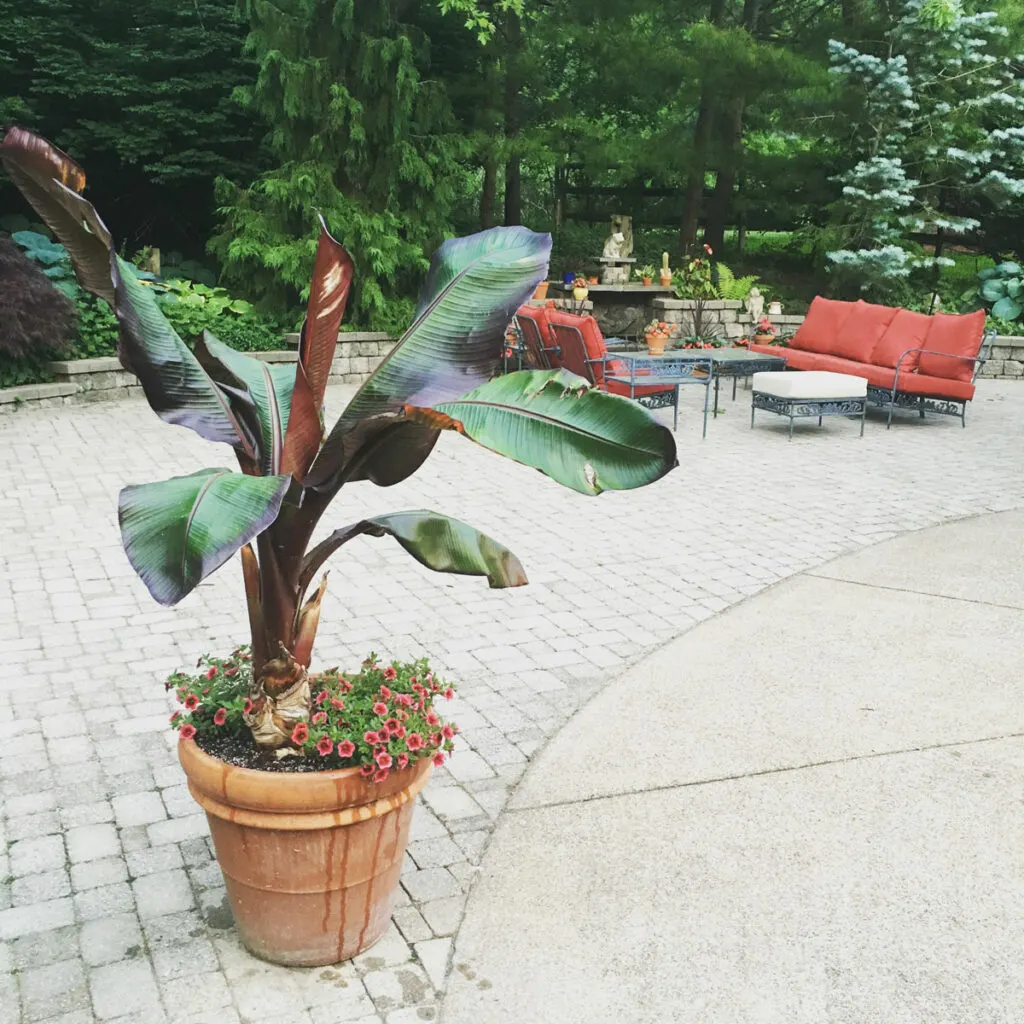
Another two months later, by August, it grew into the beauty that you see below.
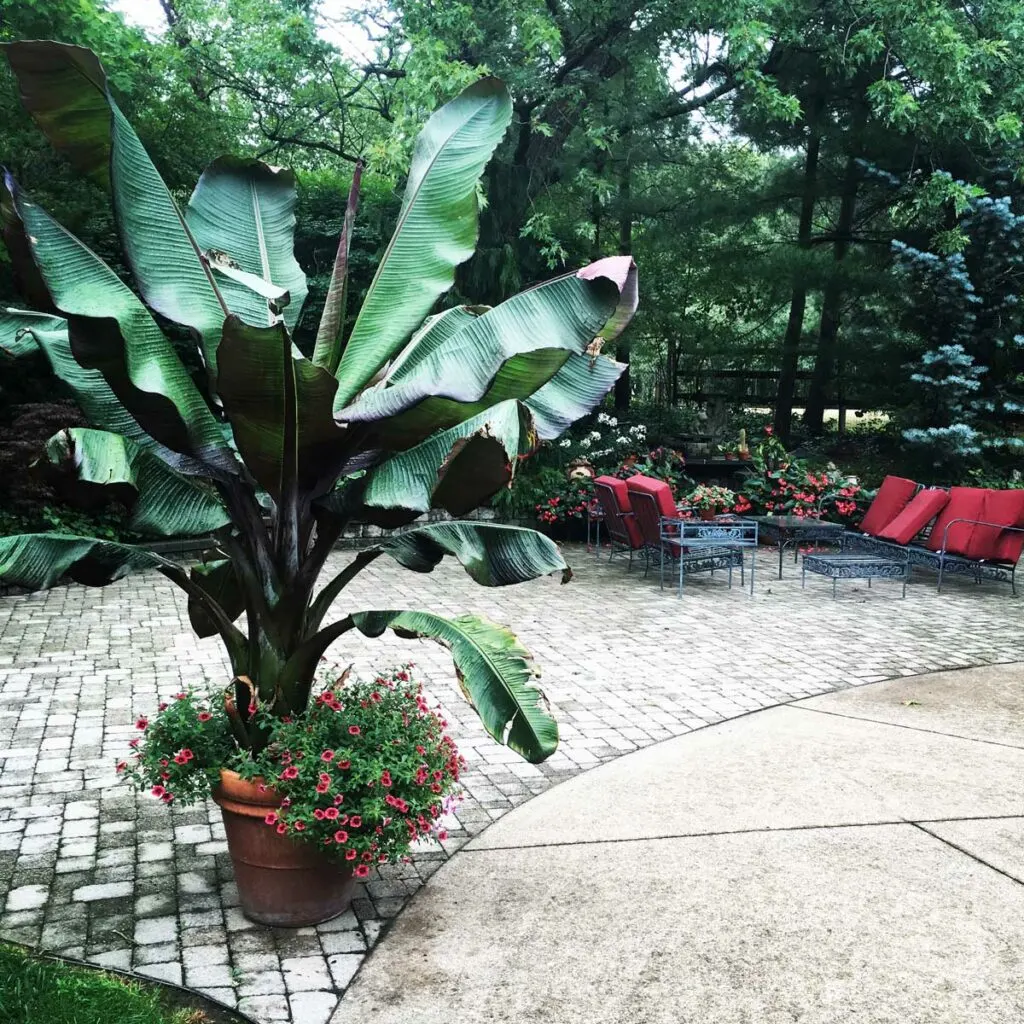
RED ABYSSINIAN BANANA CARE TIPS
LIGHT
These plants like full sun, so the more sun the better. I would recommend at least a half day sun at a minimum.
WATER
Keep your plants very well watered. I normally water my plants daily during warm weather. It is very difficult to “overwater” these plants. They like plenty of water! Water as soon as the surface of the soil starts to feel dry.
FERTILIZER
These plants are very rapid growers and like a lot of fertilizer. Like I mentioned previously, when I take the plants out of dormancy and back outside, I will mix in Oscomote slow-release fertilizer. Then every week, I apply Miracle-Gro.
I hope you’ve enjoyed this post on overwintering banana plants. Have you tried this? Comment below. I’d love to hear!


